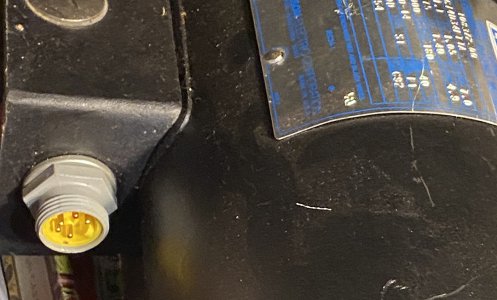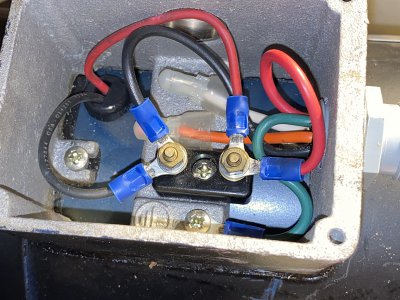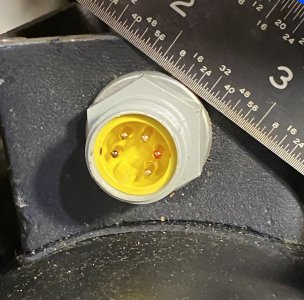- Joined
- Feb 13, 2017
- Messages
- 2,138
Some afterthoughts:
It has been mentioned that a PerMag motor can be driven as a generator. In actuality, any DC motor is also a generator. Which is just a matter of whether a "load" or a "prime mover" is connected. Many(most) diesel-electric propulsion ships use the generator connected to a battery to "motorize" the prime mover (diesel) to start. There are exceptions, I served on one. But most do. Railroad locomotives use the same process. It is necessary to have controls for the field to some extent, but depends on the situation. Basically, the "generator" is also the "starter" motor.
Another thought that doesn't really fit your situation is to reverse a series DC motor with only two(2) leads. The series field is routed through a diode bridge rectifier mounted at the motor. The bridge carries armature current, so for large motors (over a very few HP) is not really an option. I had devised the solution for a bridge crane in 1978 or 79. Reliance Electric picked up the thought and used it on their DC drives later. But most of their drives were for shunt fields, so the connections were a little different. My implementation was to reduce the number of "trolley slides" (hence wires) on a bridge crane.
.
It has been mentioned that a PerMag motor can be driven as a generator. In actuality, any DC motor is also a generator. Which is just a matter of whether a "load" or a "prime mover" is connected. Many(most) diesel-electric propulsion ships use the generator connected to a battery to "motorize" the prime mover (diesel) to start. There are exceptions, I served on one. But most do. Railroad locomotives use the same process. It is necessary to have controls for the field to some extent, but depends on the situation. Basically, the "generator" is also the "starter" motor.
Another thought that doesn't really fit your situation is to reverse a series DC motor with only two(2) leads. The series field is routed through a diode bridge rectifier mounted at the motor. The bridge carries armature current, so for large motors (over a very few HP) is not really an option. I had devised the solution for a bridge crane in 1978 or 79. Reliance Electric picked up the thought and used it on their DC drives later. But most of their drives were for shunt fields, so the connections were a little different. My implementation was to reduce the number of "trolley slides" (hence wires) on a bridge crane.
.



